The National Museum of Denmark
"Tidens Tøj," loosely translated (by Google, I don't speak Danish!) as "Time's Clothes," is the virtual companion to "Body and Disguise," an exhibition (semi-)recently staged by the National Museum of Denmark, which featured items of clothing from the 18th through the 20th centuries. One of the highlights of this particular virtual museum collection is that it offers a number of scaled patterns on items' detail pages. If only a greater number of museums would start to do this and make it a trend in virtual exhibits and online acquisitions catalogues! We'll just keep hoping (and hinting!)!
All of the information I've gathered from the website was gleaned through a Google translation of the original Danish text, so if I've misinterpreted anything, pray forgive my errors. If your knowledge exceeds mine in this area, please do let me know of any corrections so that I may make them swiftly. Thank you!
The following images are borrowed from, and linked directly back to, the website of the "Tidens Tøj" exhibit and originate entirely from the digital database of the National Museum of Denmark. They remain the full and copyrighted property of the aforementioned museum. All images are used for private educational purposes only, without any monetary gain whatsoever, and no copyright infringement is intended.
Our National Museum of Denmark Top Ten:
Number One: A silk hooded "caraco" jacket in silk, dating to approximately 1775 (acquisition number W.25.a (petticoat) and W.25.b (jacket)). I can't make out much more than that from the Google translation, unfortunately. The museum identifies this as undress, an informal, "morning" outfit of the sort one would wear at home before dressing for the day.
This is a wonderful piece. I love the pleating at the back, and the way it is fitted using the waistband piece. I also love the drape of that hood. I wonder, though - is it what we would call a brunswick, strictly speaking? That same question applies to the piece below as well. Could anyone offer some insight on that?
The provenance for this piece is neat. It was the "bridal morning suit" owned by the wife of a cleric, and, according to the museum, was most likely worn by her during those first few days of honeymooning at home after her wedding.
Number Three: A sacque-back gown and matching petticoat of silk, 1778 (acquisition number W.8.g). The silk appears to be painted, but I can't confirm that with the icky Google translation.
The gown's trim is padded and edged with lace, and the interior of the bodice is lined with a red canvas (linen or cotton, I can't tell).
The interior of the gown, showing the back lacing that adjusts
the gown's size beneath the loose back pleats. For further details
on how this works, see this earlier Threaded Bliss post.
Be sure to check out the museum's detail page for this one because they offer a fantastic discussion of one of the quandaries that so often faces curators of costumes: how precisely was a garment worn, and should possible missing pieces be reproduced by conjecture, or simply left out so that the original may speak for itself? In the past, the website explains, this gown was displayed with a reproduction stomacher and the back lacing tightly closed to expand the chest width. For this exhibition, however, the curators made the choice to leave a stomacher out because it was not original to the gown; loosening the laces, they displayed the ensemble as if the center front closed edge-to-edge. This raises some crucial questions about museum re-presentations or interpretations of objects, and in anticpation of the upcoming CW conference, "A Reconstructed Visitable Past," I invite you, gentle reader, to offer your thoughts on this issue. What is at stake in making these types of decisions? What would you do, and why?
Number Four: A jacket ("bodice") of greyish-beige silk brocade, dating to the 1770s (acquisition number 813/1951). This jacket was made for a young girl about 7 years old; because long gowns were expensive and a heavy encumberance for a young lady, the shorter skirts of a jacket like this were an acceptable concession, as the structured style still helped maintain the fashionable body shape of the period.
The jacket spiral-laces up the front with eyelets, which are concealed beneath the robings. Presumably there was once a matching stomacher, which is now missing. There is a detail photo on the item's page, but the link doesn't seem to be working properly. The back of the jacket appears to be shaped with en fourreau-like pleats that are then released into the skirts. The remainder of the skirts' fullness is achieved by gathering (or pleating, it's so tough to see!) the fabric along the shaped waistline.
Number Five: A (probably) Spitalfields silk satin robe a la francaise (acquisition number W.8.j). The gown's design has been dated to 1786, while the woven larger pattern on the silk suggests the fabric dates to the 1740s.
Number Six: A young child's dress of narrow pink and white striped taffeta, 1780-1785 (acquisition number W.1138). The gown actually closes in back with ties. The false stomacher front is created by arranging strips of ruched silk in the traditional V shape; that V shape is echoed in the dip at the center back waistline. Box pleats decorate the hem of the skirts. I just love this piece. I think it's my favorite of this grouping.
Number Seven: A silk gauze cap decorated with a green silk taffeta bow and ribbons, 1780-1785 (acquisition number W.1138). This delicate cap was made to be worn with the child's gown above.
I love the look of silk gauze caps. The milliner's shop at Colonial Williamsburg frequently displays adult-sized examples of their own design, one of which can be seen here on their facebook page.
Number Eight: A silk pet-en-l'air (the museum lists this as a caraco, but I'm thinking something is being lost in translation) and matching petticoat, 1780s (acquisition number W.9). The detail page indicates that the fabric was imported from China, but it doesn't say whether it is embroidered or painted. It's very difficult to tell from the small photos, and the one close-up link doesn't work. Boo! :-(
This garment closes with a false-stomacher edge-to-edge "vest" or "waistcoat" front. The very narrow pleats in the back, along with the past-elbow-length sleeves and the shorter skirt, date this pet-en-l'air to the 1780s.
Be extremely excited! A scaled .pdf pattern for this caraco and the matching petticoat is provided on the museum's detail page for this listing. I only wish they also offered a more detailed sketch of the embroidered (or painted) design, becasuse I'd love to reproduce that, too! A word of warning about the .pdf - there is no indication about the scale used in the drawing. I assume it is centimeters, but I haven't double-checked that so make a muslin first (as always!) if you use it for a full-scale reproduction.
Number Nine: A quarter-back open robe of printed cotton with a matching petticoat, dating to the 1780s (acquisition number W.18). The front of the bodice is boned.

A detail of the printed cotton fabric.
The National Museum of Denmark took a pattern from this gown as well, and has made it available in a scaled .pdf on this item's detail page.
Number Ten: A striped silk piemontaise, dated to approximately 1780-1790 (acquisition number 621.a-c). The piemontaise was like a robe a la francaise, except that the pleats were left to hang free from the shoulders and were not incorporated into the back bodice or the skirts of the gown; the bodice of the gown, in other words, is cut much like a quarter-back gown.
Occasionally, the pleats of a piemontaise are tacked down at the waistline, but in this case they appear not to be. Gowns like this were in style for a very brief time in the 1780s, and as a result are quite hard to come by. See this fantastic article on a similar piemontaise from La Couturiere Parisienne for a detailed exploration of the quirks of this often-forgotten style.
There is a pattern taken from this gown as well, which helps to illuminate the way the piemontaise style worked. Visit the museum's detail page for a .pdf!
Printed Resources Featuring Items from the 18th century part of the National Museum of Denmark:
The detail pages for each of these items list the published works in which the garment has been featured. If you can read Danish, you're in luck here! If not, you'll just have to sit with me in confusion and regret at potential costuming resources lost in translation. If anyone with some knowledge of Danish can locate any of these resources, do let me know so I can update this post and share them!

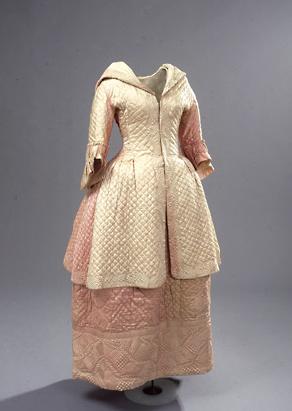
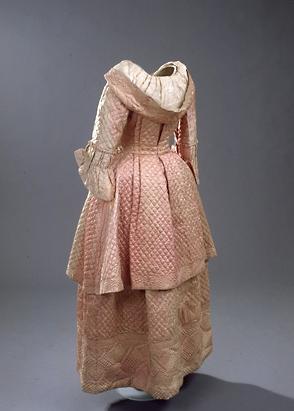
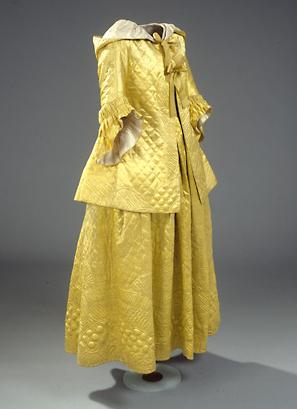
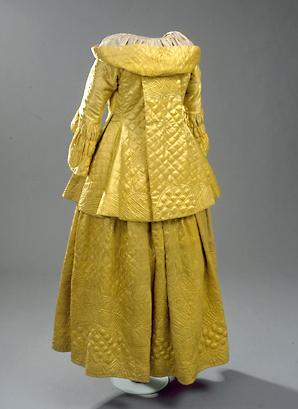
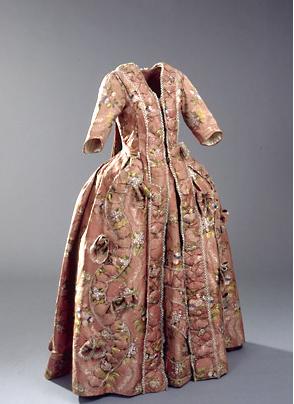
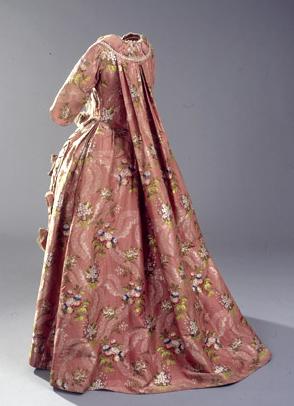
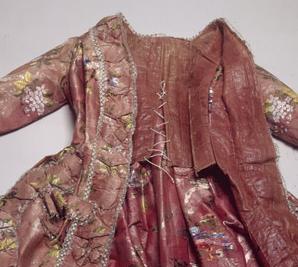
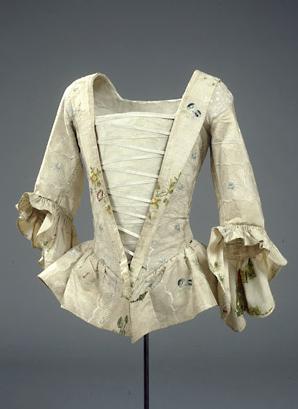

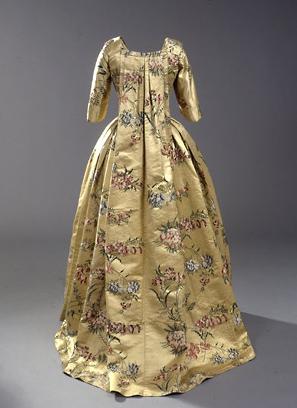
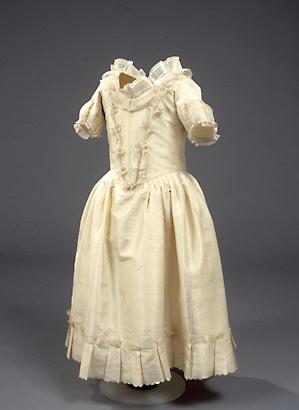
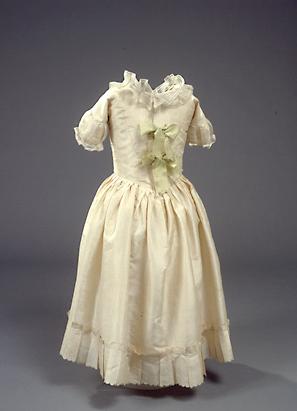

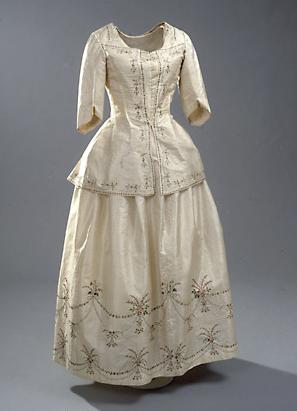
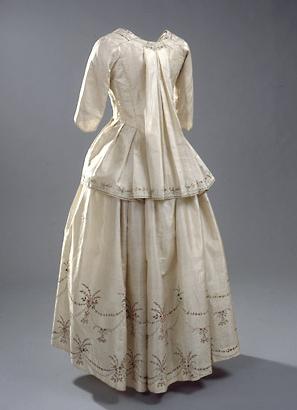
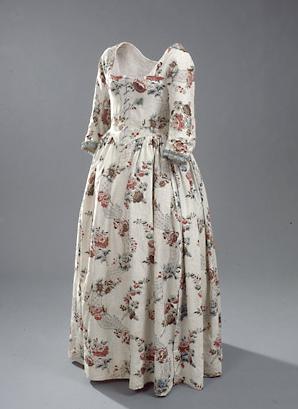
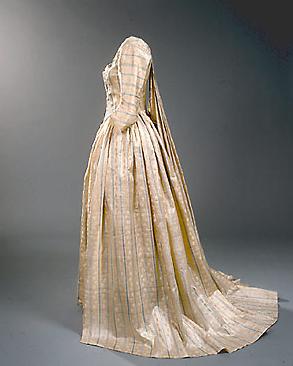
6 comments:
Ohhhh, I like how those pleats hang on the back of that last gown. I don't know if I'll ever remember or understand all the French terms for the gowns. I don't think that will be covered by Rosetta Stone.
Laurie
Some fabulous gowns. :) Which one should I make first??
I know, don't you just want to drop everything and try all those patterns right now? Unfortunately, my 8 other in-progress projects are currently hogging all my floor (and chair and table) space, so... :-) If you test any of them, Renate, let us know!
Those top two jackets are so cute. I would wear them to school over jeans. :D
Forgive my hazy morning recollection... but I've run across several names to the first jacket: Brunswick (most common today), Irish Hood? in a NY tailor advertisement, Jacket, and there's another that is tugging at my memory. I will look the quotes up after breakfast & get back to you with references.
Beautiful post!
I am Danish and I would be happy to help translating if you are interested? :)
Post a Comment